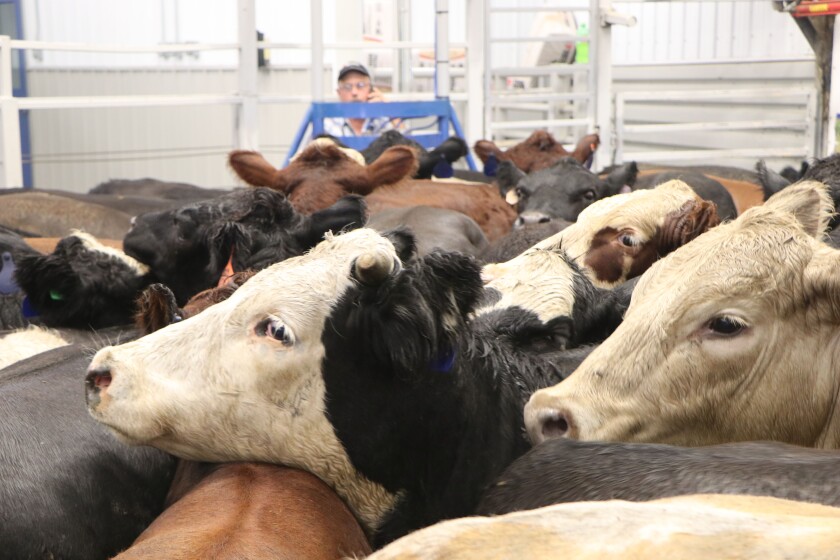Unlocking Growth Potential: Bagley Risk Management Approaches
Unlocking Growth Potential: Bagley Risk Management Approaches
Blog Article
Understanding Livestock Danger Security (LRP) Insurance: A Comprehensive Guide
Navigating the realm of animals threat protection (LRP) insurance coverage can be an intricate venture for several in the agricultural industry. From exactly how LRP insurance policy works to the various protection alternatives offered, there is much to reveal in this comprehensive overview that might possibly shape the means animals manufacturers come close to threat monitoring in their services.

How LRP Insurance Functions
Occasionally, recognizing the technicians of Livestock Risk Defense (LRP) insurance policy can be intricate, yet breaking down just how it functions can give clarity for herdsmans and farmers. LRP insurance is a threat administration device designed to shield animals manufacturers versus unanticipated cost declines. The plan allows manufacturers to set a coverage level based on their certain requirements, choosing the variety of head, weight range, and coverage rate. As soon as the plan is in place, if market value drop below the protection rate, manufacturers can submit a claim for the distinction. It is necessary to keep in mind that LRP insurance coverage is not a profits guarantee; rather, it focuses only on cost danger protection. The protection duration normally ranges from 13 to 52 weeks, supplying flexibility for manufacturers to pick a duration that straightens with their production cycle. By using LRP insurance policy, herdsmans and farmers can alleviate the financial dangers connected with varying market rates, guaranteeing better security in their operations.
Qualification and Protection Options

When it comes to coverage options, LRP insurance uses producers the adaptability to pick the coverage level, protection duration, and recommendations that ideal suit their risk monitoring demands. By understanding the eligibility requirements and protection choices available, livestock producers can make educated decisions to manage threat effectively.
Advantages And Disadvantages of LRP Insurance
When examining Livestock Danger Protection (LRP) insurance, it is important for animals manufacturers to consider the benefits and downsides intrinsic in this danger administration tool.

Among the primary advantages of LRP insurance policy is its capacity to give defense versus a decline in animals prices. This can assist safeguard producers from monetary losses arising from market variations. Furthermore, LRP insurance supplies a degree of flexibility, permitting manufacturers to tailor protection degrees and policy durations to suit their certain requirements. By locking in an assured rate for their livestock, manufacturers can better handle threat and prepare for the future.
However, there are also some downsides to consider. One limitation of LRP insurance is that it does not shield against all sorts of threats, such as condition break outs or all-natural catastrophes. In addition, premiums can sometimes be expensive, specifically for manufacturers with huge animals herds. It is essential for manufacturers to very carefully analyze their private risk exposure and monetary circumstance to figure out if LRP insurance coverage is the appropriate threat administration device for their procedure.
Understanding LRP Insurance Coverage Premiums

Tips for Making Best Use Of LRP Perks
Optimizing the advantages of Animals Danger Protection (LRP) insurance policy needs calculated preparation and positive risk monitoring - Bagley Risk Management. To maximize your browse around this web-site LRP protection, think about the find more information adhering to suggestions:
Routinely Analyze Market Conditions: Remain informed regarding market trends and cost variations in the livestock sector. By checking these elements, you can make educated decisions concerning when to acquire LRP coverage to secure versus possible losses.
Establish Realistic Insurance Coverage Levels: When selecting protection levels, consider your production expenses, market price of animals, and potential risks - Bagley Risk Management. Setting practical insurance coverage degrees ensures that you are sufficiently protected without overpaying for unneeded insurance
Diversify Your Protection: As opposed to counting only on LRP insurance coverage, take into consideration diversifying your risk monitoring techniques. Combining LRP with other risk management devices such as futures contracts or choices can offer extensive insurance coverage versus market uncertainties.
Review and Adjust Protection On a regular basis: As market problems transform, occasionally review your LRP insurance coverage to guarantee it lines up with your present risk exposure. Changing insurance coverage levels and timing of acquisitions can help optimize your threat protection method. By following these ideas, you can optimize the benefits of LRP insurance coverage and secure your animals operation versus unforeseen threats.
Final Thought
In conclusion, animals danger security (LRP) insurance coverage is a beneficial tool for farmers to manage the financial risks connected with their animals operations. By comprehending just how LRP functions, qualification and coverage alternatives, as well as the advantages and disadvantages of this insurance coverage, farmers can make informed decisions to secure their livelihoods. By very carefully thinking about LRP costs and carrying out methods to make best use of benefits, farmers can alleviate prospective losses and guarantee the sustainability of their procedures.
Animals manufacturers interested in acquiring Livestock Threat Protection (LRP) insurance can check out a variety of eligibility requirements and insurance coverage options tailored to their particular livestock operations.When it comes to protection options, LRP insurance policy supplies manufacturers the adaptability to select the insurance coverage degree, protection period, and recommendations that ideal match visit this page their risk monitoring demands.To grasp the complexities of Livestock Threat Security (LRP) insurance policy fully, recognizing the elements affecting LRP insurance policy costs is critical. LRP insurance policy costs are identified by various components, consisting of the protection level picked, the anticipated cost of livestock at the end of the insurance coverage duration, the kind of livestock being insured, and the length of the insurance coverage period.Evaluation and Readjust Insurance Coverage Routinely: As market problems transform, periodically evaluate your LRP coverage to ensure it lines up with your current risk direct exposure.
Report this page